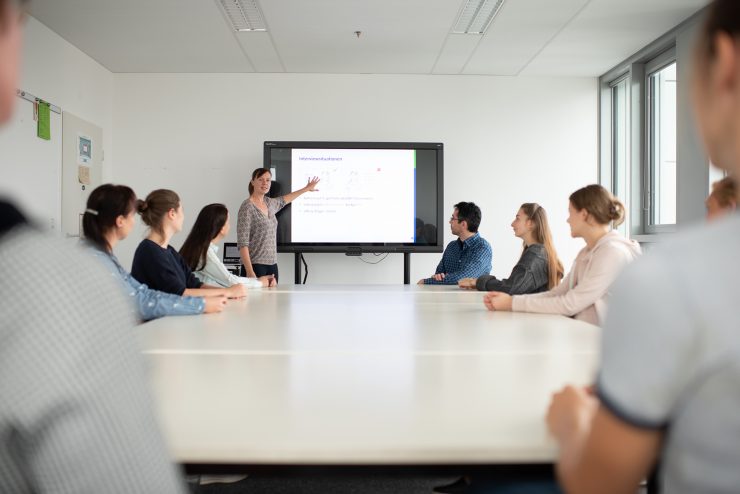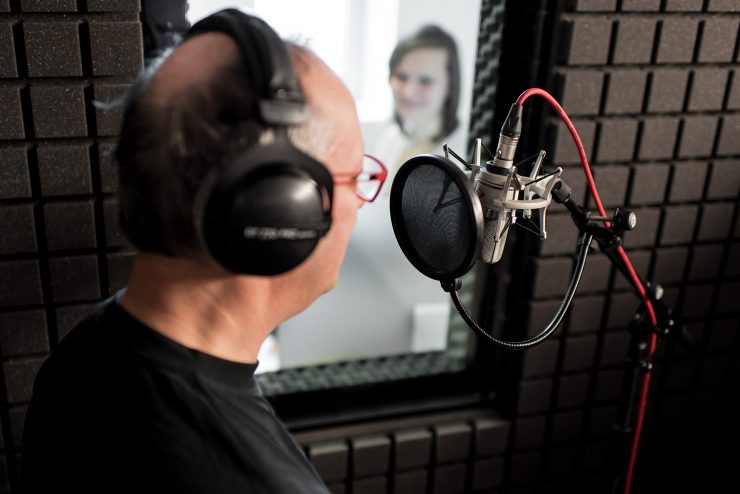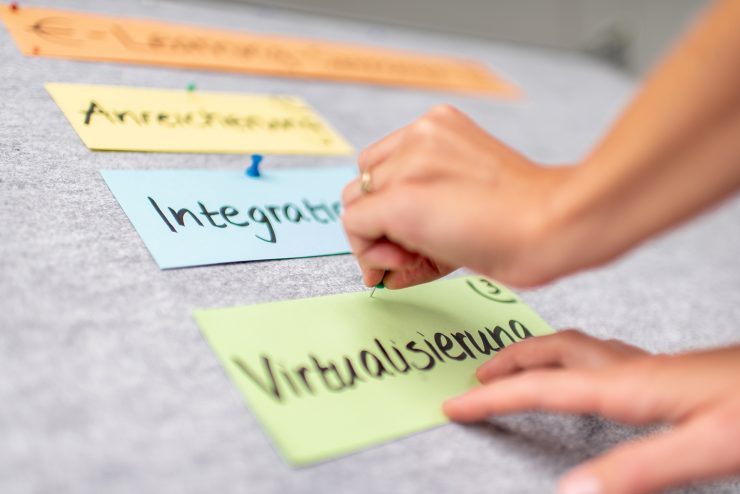Videos for learning are multi-faceted. They can explain a difficult issue or introduce a laboratory course. They can be used as an opening to a new topic or even for converting the entire course adopting the flipped classroom model. In recent years, more and more teaching staff have turned to us for support in creating videos and screen recordings. We, the e-learning team from the Technische Universitaet Berlin, have been offering courses, consulting and support on the use of digital media in university teaching for almost twenty years now. Over the past five to ten years, the interest of lecturers particularly in the creation and use of videos for learning has risen sharply. They have recognised that appropriate use of audio and video offers a variety of possibilities to enrich their own teaching. It can make learning more vivid and varied and encourage students to engage in learning.
The offer for our teaching staff is made up of different components. In our courses they can learn more about the possible applications of instructional videos with a special focus on the didactic aspects in university teaching. They are also given an overview of the necessary technical equipment and practice audio, video and screen recordings for various teaching situations. Furthermore, they learn how to edit the videos and distribute the produced material. We try to keep it as simple as possible in order to make the inhibition threshold in dealing with the technology low. We let the teachers try filming with our simple camcorders but also with their own smartphones. This enables them to use their own technology for later recordings. By creating simple screen recordings of presentations, combined with voice-overs, they can also learn how to produce small videos quickly and easily.
In addition to our courses, we offer the opportunity to record professional videos in our two studios. The range extends from simple screencasts to explanation videos in “hand-laying style” to talking head videos in front of a green screen. We also assist them directly on site, e.g. for the production of introductory videos for lab courses.
But technical support is only one pillar. What is important to us is to also advise teaching staff on the didactic design and curricular integration of videos for learning. It often happens, for example, that lecturers want to record videos of half an hour or longer. In such cases we look together at how to divide the learning content into smaller portions and streamline it. A good guideline here is to aim for 3-5 minutes clips, but in any case, no longer than ten minutes. Otherwise it may be helpful to work with a table of contents and jump marks within the video. We also observe again and again how essential a good preparation is for a successful recording. For instance, it is very important to prepare a well elaborated script for a voiceover or an exact script for an explanation video.
Another important point is the integration of these videos into the overall concept of the course. It is not enough to simply put the videos on a learning platform and to hope that the students will watch them. Rather, it is necessary to integrate the videos into the context of the course. This can be done, for example, by means of accompanying tasks. Or, when applying the flipped classroom approach, the videos are made available online before the classroom session. In this way, the time gained can be used to discuss and deepen the learning content. In recent years, we have already been able to support such ambitious teaching projects at our university and hope that more will follow in the near future.

Author
Dr. Anja Wipper
E-Learning Team, Centre for Scientific Continuing Education and Cooperation (ZEWK), Technische Universitaet Berlin Germany


















